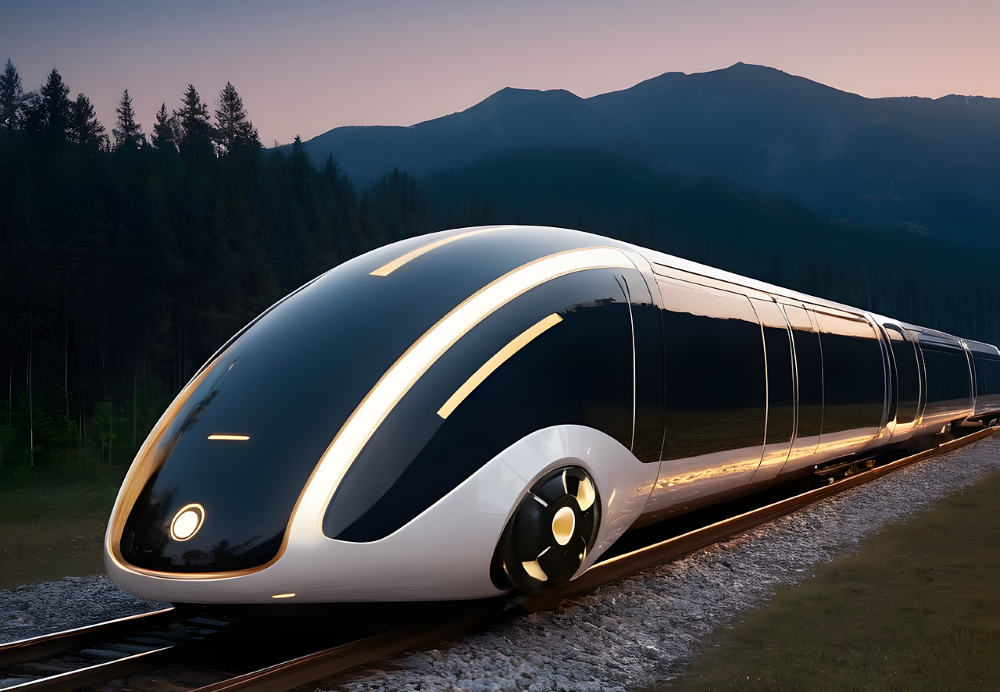Pakistan’s Bullet Train Project Aims to Revolutionize National Transport and Economic Growth
Pakistan’s ambitious bullet train initiative is poised to be a transformative leap in the country’s infrastructure development, aimed at modernizing outdated rail systems and unlocking new economic opportunities for its rapidly growing population.
Punjab Chief Minister Maryam Nawaz Sharif has recently approved the Lahore–Rawalpindi Bullet Train Project, which aims to slash travel time between the two cities to just 2.5 hours, a significant improvement from the existing 4–5 hour journey. While the plan faces notable challenges in financing, terrain, and outdated infrastructure, supporters believe its long-term benefits could echo the success of past landmark projects like the motorway network initiated by former Prime Minister Nawaz Sharif in the 1990s.
Back when the Lahore–Islamabad Motorway (M-2) was introduced, it faced public skepticism over its cost and relevance. Today, it serves as a vital economic corridor that has enhanced connectivity, logistics, tourism, and intercity commerce across the country. Similarly, Lahore’s Metro Bus and the Orange Line Metro Train—both initially dismissed as costly ventures—now transport hundreds of thousands daily, alleviating congestion and providing affordable mobility.
Proponents of the bullet train argue that it is about more than just faster travel. As Senior Minister Marriyum Aurangzeb noted, the real objective is to “leapfrog outdated systems and transform how cities, markets, and people connect.” The Lahore–Rawalpindi route, spanning 280 kilometers, is one of the country’s busiest, and a high-speed rail line could significantly reduce highway traffic, cut fuel costs, and stimulate local economies.
READ MORE:
Can Pakistan Realistically Power Bitcoin Mining with 2,000 Megawatts of Electricity?
Railways Minister Hanif Abbasi emphasized that the project is part of a wider transport modernization plan under a public-private partnership (PPP) model. Feasibility studies have also been initiated for six other potential high-speed rail corridors across Punjab, extending the vision to industrial and agricultural hubs.
In its first phase, the bullet train initiative aims to upgrade existing rail infrastructure to support trains running at speeds of up to 160 km/h—a significant increase from the current 60–70 km/h average. While full bullet train speeds (over 300 km/h) may be a long-term goal, the phased approach allows for steady progress, depending on ridership, demand, and funding sustainability.
There are, however, formidable obstacles. The current rail line is ill-equipped for high-speed travel due to its sharp curves, old bridges, and inconsistent gradients. Acquiring or manufacturing bullet train-compatible rolling stock will require substantial investment, estimated at around Rs400 billion ($1.4 billion). Government sources say both federal and provincial administrations are exploring hybrid financing models involving foreign and private sector investment.
Despite these challenges, the economic potential is immense. High-speed rail can lower transport costs, reduce emissions, generate employment, and shift commuters away from environmentally damaging private vehicle use. Just as motorways opened up economic zones, high-speed railways could stimulate growth in underserved areas.
Pakistan’s approach is rooted in realism. The vision is not to launch a world-class bullet train instantly but to gradually enhance the country’s rail network, similar to how the motorway system evolved over decades. Even in countries like India and the United States, high-speed rail projects have typically started small and scaled up over time.
This initiative could mark the beginning of a new era in Pakistani transport, showcasing how visionary infrastructure, when backed by political will and strategic planning, can shape the nation’s future. The bullet train is more than just a transport solution—it represents a bold step toward progress.
Pakistan’s ambitious bullet train initiative is poised to be a transformative leap in the country’s infrastructure development, aimed at modernizing outdated rail systems and unlocking new economic opportunities for its rapidly growing population.
Punjab Chief Minister Maryam Nawaz Sharif has recently approved the Lahore–Rawalpindi Bullet Train Project, which aims to slash travel time between the two cities to just 2.5 hours, a significant improvement from the existing 4–5 hour journey. While the plan faces notable challenges in financing, terrain, and outdated infrastructure, supporters believe its long-term benefits could echo the success of past landmark projects like the motorway network initiated by former Prime Minister Nawaz Sharif in the 1990s.
Back when the Lahore–Islamabad Motorway (M-2) was introduced, it faced public skepticism over its cost and relevance. Today, it serves as a vital economic corridor that has enhanced connectivity, logistics, tourism, and intercity commerce across the country. Similarly, Lahore’s Metro Bus and the Orange Line Metro Train—both initially dismissed as costly ventures—now transport hundreds of thousands daily, alleviating congestion and providing affordable mobility.
Proponents of the bullet train argue that it is about more than just faster travel. As Senior Minister Marriyum Aurangzeb noted, the real objective is to “leapfrog outdated systems and transform how cities, markets, and people connect.” The Lahore–Rawalpindi route, spanning 280 kilometers, is one of the country’s busiest, and a high-speed rail line could significantly reduce highway traffic, cut fuel costs, and stimulate local economies.
Railways Minister Hanif Abbasi emphasized that the project is part of a wider transport modernization plan under a public-private partnership (PPP) model. Feasibility studies have also been initiated for six other potential high-speed rail corridors across Punjab, extending the vision to industrial and agricultural hubs.
In its first phase, the bullet train initiative aims to upgrade existing rail infrastructure to support trains running at speeds of up to 160 km/h—a significant increase from the current 60–70 km/h average. While full bullet train speeds (over 300 km/h) may be a long-term goal, the phased approach allows for steady progress, depending on ridership, demand, and funding sustainability.
There are, however, formidable obstacles. The current rail line is ill-equipped for high-speed travel due to its sharp curves, old bridges, and inconsistent gradients. Acquiring or manufacturing bullet train-compatible rolling stock will require substantial investment, estimated at around Rs400 billion ($1.4 billion). Government sources say both federal and provincial administrations are exploring hybrid financing models involving foreign and private sector investment.
Despite these challenges, the economic potential is immense. High-speed rail can lower transport costs, reduce emissions, generate employment, and shift commuters away from environmentally damaging private vehicle use. Just as motorways opened up economic zones, high-speed railways could stimulate growth in underserved areas.
Pakistan’s approach is rooted in realism. The vision is not to launch a world-class bullet train instantly but to gradually enhance the country’s rail network, similar to how the motorway system evolved over decades. Even in countries like India and the United States, high-speed rail projects have typically started small and scaled up over time.
This initiative could mark the beginning of a new era in Pakistani transport, showcasing how visionary infrastructure, when backed by political will and strategic planning, can shape the nation’s future. The bullet train is more than just a transport solution—it represents a bold step toward progress.




